#Clean Energy Transition
Explore tagged Tumblr posts
Text
#Australia#first nations#clean energy#clean energy transition#solar power#indigenous peoples#indigenous issues#green energy#green technology#aboriginal people
40 notes
·
View notes
Text
Now is the time to shape Saskatoon’s climate future—together. The City is updating its climate action strategies, and your voice matters. From smoky skies to summer heatwaves and flash floods, we’re all feeling the impacts of a changing climate. This short, 9-minute survey is your chance to share how climate change is affecting you and what actions you believe the City should prioritize. Whether…

View On WordPress
#active transportation#adaptation strategies#afforestation#air quality#battery technology#bike lanes#biodiversity#Canada#carbon budgeting#Carbon reduction#Citizen Science#civic engagement#civic sustainability#clean energy transition#cleaner air#Climate Action#climate change#climate equity#climate innovation#Climate Justice#Climate Leadership#climate literacy#Climate Resilience#climate strategy#community gardens#community input#composting#drought resistance#eco-conscious living#Ecological Awareness
0 notes
Text
Incentive scheme for recycling of critical minerals on anvil, says Official | India News - Times of India
The incentive scheme for recycling of critical minerals, such as copper, lithium, nickel, cobalt and rare earth elements, is in the final stages, a mines ministry official said on Friday. The Union budget has allocated Rs 1,500 crore for recycling of critical minerals under the National Critical Mineral Mission (NCMM), Joint Secretary in Mines Ministry Dinesh Mahur said during an event here. He…
#clean energy transition#copper lithium nickel cobalt#mineral exploration#National Critical Mineral Mission#recycling of critical minerals
0 notes
Text
India's Solar Boom in Rajasthan: Redefining Global Energy
Introduction: A Radiant Transformation India’s commitment to renewable energy has taken a monumental leap solar boom, with Rajasthan emerging as the epicenter of this transformation. The state’s vast deserts and high solar irradiance make it an ideal location for solar energy projects. As of April 2025, India boasts an installed solar capacity of 107.94 GW, with Rajasthan contributing a…
#clean energy transition#global energy shift#India solar boom#Rajasthan solar energy#renewable energy India#solar capacity 2025#solar investments India#solar parks Rajasthan#sustainable energy projects
0 notes
Text

#solar panel installers Melbourne#EcoRun Energy#solar energy Australia#renewable energy solutions#sustainable living#green energy Victoria#solar power systems#clean energy transition#home solar installation#solar rebate Australia
0 notes
Text
Blue Ammonia Market to Skyrocket to USD 3.58 Billion by 2032 Driven by Decarbonization and Global Hydrogen Economy
The global blue ammonia market is entering a period of exponential growth, with its value projected to rise from USD 79.1 million in 2024 to USD 3,579.7 million by 2032, advancing at an exceptional CAGR of 61.2% during 2025–2032. This remarkable surge is underpinned by the rising demand for low-carbon fuels, global decarbonization goals, and the emerging hydrogen economy.

Blue ammonia is produced using natural gas as a feedstock, but with a critical difference—carbon dioxide (CO₂) emissions generated during production are captured and either stored or reused via carbon capture and storage (CCS) technologies. This makes blue ammonia a crucial bridge solution between conventional grey ammonia and the fully renewable green ammonia, especially in hard-to-abate sectors.
Driving Forces Behind the Rapid Growth of the Blue Ammonia Market
The global push toward net-zero emissions and a low-carbon future is one of the primary factors accelerating the demand for blue ammonia. Countries around the world are making ambitious commitments under the Paris Agreement, prompting governments and industries to explore alternative energy carriers with reduced carbon footprints. Blue ammonia stands out as a versatile and scalable option that can be deployed in energy production, transportation, and industrial processes.
In particular, the hydrogen economy is increasingly recognizing blue ammonia as a key enabler of clean hydrogen transport and storage. Since ammonia (NH₃) contains approximately 17.6% hydrogen by weight, it serves as an efficient hydrogen carrier. It can be easily liquefied, stored, and shipped over long distances, making it ideal for international hydrogen supply chains.
Additionally, the maritime shipping industry, which faces significant pressure to decarbonize, is turning to blue ammonia as a low-carbon marine fuel. With the International Maritime Organization (IMO) setting strict GHG emission targets, shipping companies and engine manufacturers are actively testing ammonia-fueled engines. Blue ammonia provides a near-term solution to cut emissions while infrastructure for green ammonia and renewable hydrogen is still under development.
Regional Momentum and Strategic Investments
Regions such as North America, the Middle East, and Asia-Pacific are emerging as major players in the blue ammonia market. The U.S., for example, is leveraging its abundant natural gas resources and CCS capabilities to develop large-scale blue ammonia projects. Meanwhile, countries like Saudi Arabia and the UAE are positioning themselves as global hydrogen exporters, with blue ammonia playing a key role in their energy transition strategies.
Notable projects such as the NEOM green hydrogen initiative in Saudi Arabia and CCS-backed ammonia production facilities in the U.S. Gulf Coast are laying the foundation for rapid market expansion. Japan and South Korea, both major energy importers, have already signed long-term agreements for blue ammonia supply, further validating its global potential.
Challenges and Considerations
Despite its promise, the blue ammonia market faces several hurdles. The economic viability of CCS remains a concern, as the infrastructure is capital-intensive and still evolving. Additionally, there is growing scrutiny around the carbon intensity of natural gas supply chains and whether blue ammonia can truly deliver on its “low-carbon” promise without upstream methane leak mitigation.
Moreover, policy support, regulatory frameworks, and certification standards will be essential in scaling the blue ammonia economy. Clear definitions and lifecycle emissions accounting will help distinguish blue ammonia from its green and grey counterparts, fostering transparency and investor confidence.
The Road Ahead
As the world races toward a sustainable energy future, blue ammonia is expected to play a pivotal transitional role. It offers a low-carbon fuel alternative for industries and regions that are not yet ready for full electrification or 100% renewable energy. While green ammonia remains the long-term goal, blue ammonia provides an immediate, scalable, and impactful solution to curb global emissions.
#blue ammonia market#blue ammonia production#hydrogen carrier#ammonia as fuel#low-carbon fuel#CCS in ammonia production#hydrogen economy#clean energy transition
0 notes
Text
UK energy minister in Beijing seeks to press China on emissions - The Times of India
Miliband is the third minister in Starmer’s cabinet to visit China (Picture credit: AFP) BEIJING: UK energy minister Ed Miliband met officials in Beijing on Monday after vowing to press them on China’s emissions as well as touchy topics such as Hong Kong and forced labour.British Prime Minister Keir Starmer has sought to boost engagement with China since coming to power in July, despite concerns…
#China emissions#clean energy transition#climate change talks#Ed Miliband#Hong Kong human rights#Paris climate agreement#renewable energy cooperation#UK China relations#UK energy minister#Uyghur minority rights
0 notes
Text
The world marks a historic moment as the last coal power plant shuts down, signaling the end of an era and a bold step toward a sustainable, clean energy future.
#end of coal power#last coal power plant#coal energy phase-out#clean energy transition#renewable energy revolution#coal plant shutdown#environmental milestone#green energy future#end of fossil fuels#sustainable energy solutions#climate change action#global energy shift#renewable energy growth#carbon emissions reduction#energy transformation.#TheJuniorAge#KidsNewspaper#ChildrenNewspaper#Newspaper For Kids#Newspaperforchi
0 notes
Text
Azerbaijan's Involvement in Global Climate Negotiations
Azerbaijan’s Role in Global Climate Negotiations The foreign policy advisor to the President of Azerbaijan, Hikmet Hajiyev, recently shared insights with Euronews regarding Azerbaijan’s participation in the ongoing global climate discussions. He emphasized that Azerbaijan stands as one of the 198 nations involved in the negotiations, each with their unique responsibilities and objectives. During…
#Azerbaijan#Clean Energy Transition#climate negotiations#COP29#developing nations#financial mechanisms#global climate crisis#Hikmet Hajiyev#international cooperation
0 notes
Text
How Tata Steel Is Leading Sustainability in the Steel Sector
Tata Steel’s sustainability initiatives set new benchmarks in the steel industry, aiming for Net Zero emissions by 2045 and promoting environmental responsibility. Tata Steel, a global leader in the steel industry, is committed to achieving Net Zero emissions by 2045, aligning with the Tata Group’s Project Aalingana. The company has implemented various initiatives to reduce its carbon footprint,…

View On WordPress
#बि��नेस#business#clean energy transition#Net Zero emissions 2045#steel industry environmental initiatives#sustainable steel production#Tata Steel biodiversity conservation#Tata Steel circular economy#Tata Steel global recognition#Tata Steel sustainability#Tata Steel waste management#Tata Steel water conservation
0 notes
Text
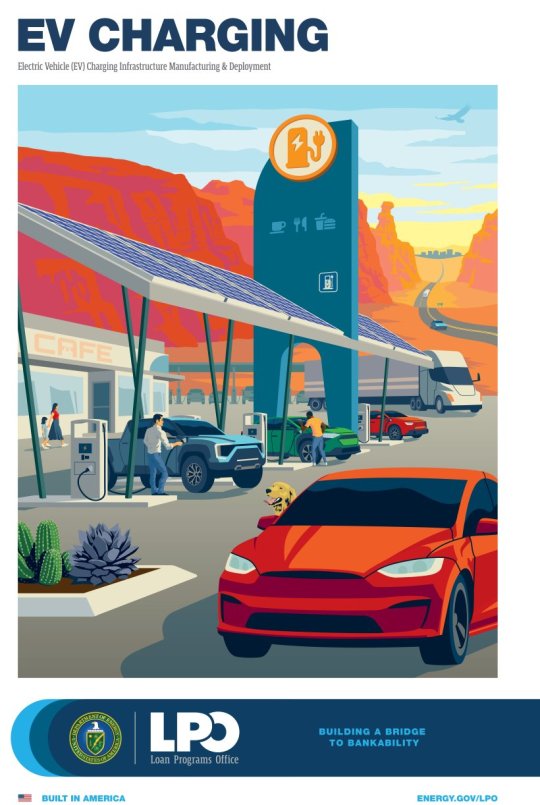
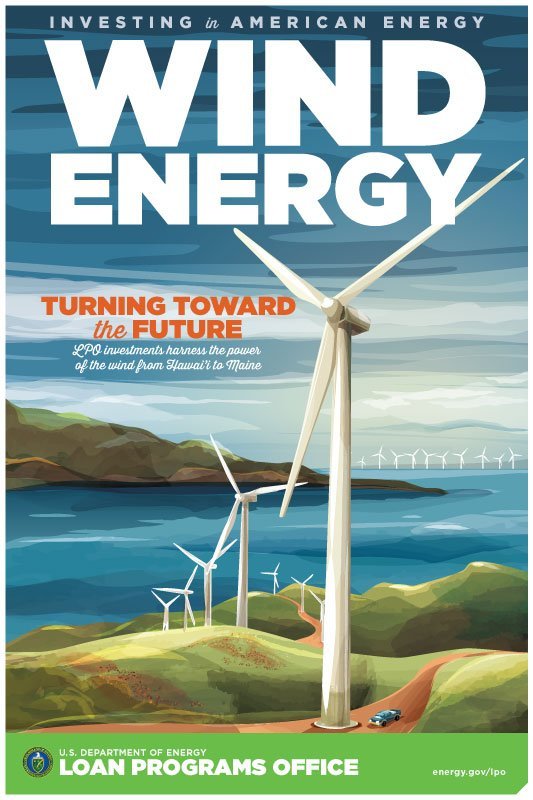
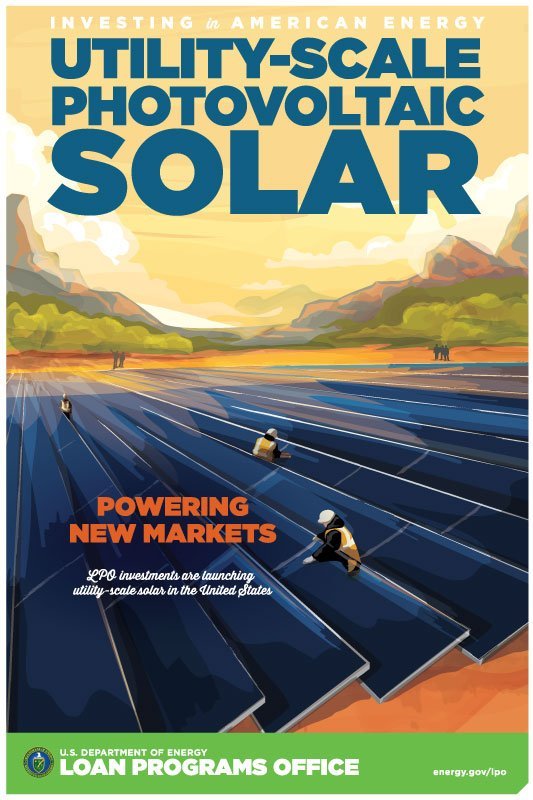
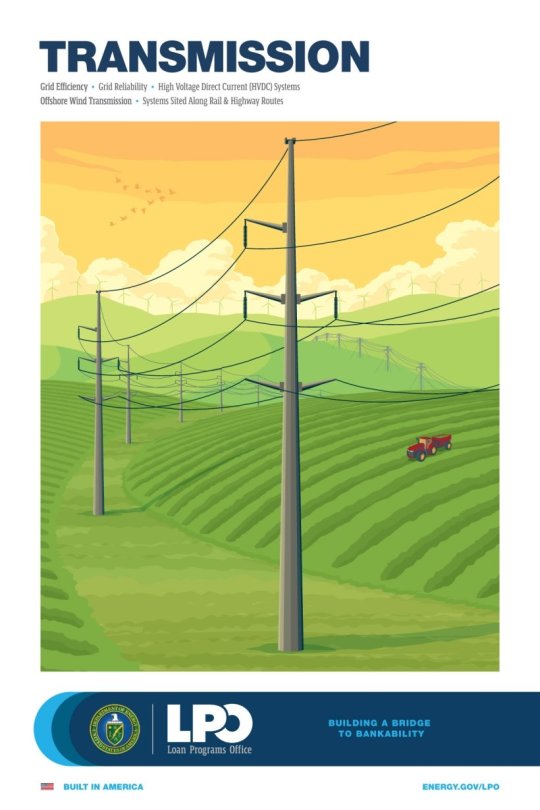
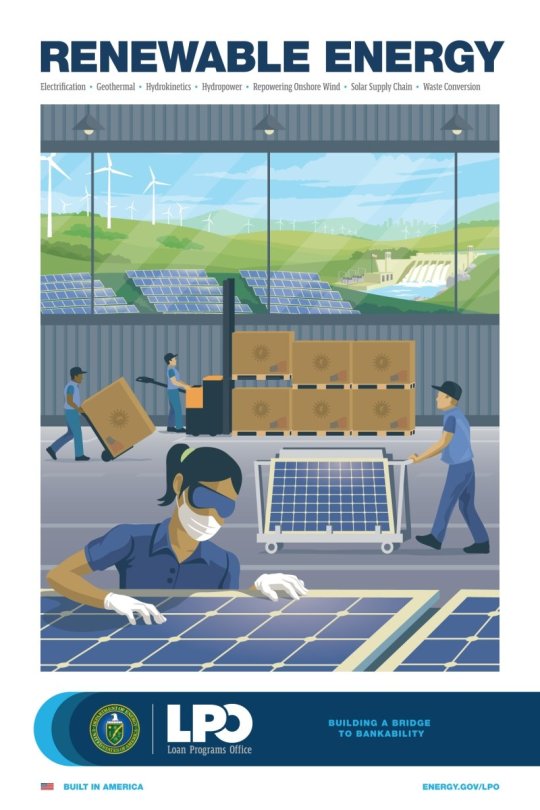
No thoughts just the DOE LPO cleantech posters
#clean energy transition#cleantech#doe#lpo#department of energy#loans program office#renewable energy#renewable energy art
0 notes
Text
The Clean Energy Transition May Be Cheaper Than We Thought
“Cost estimates leave out some of the savings of using less fossil fuels, new analysis says.” [COMMENTARY] Let’s hope this premise becomes true! The Clean Energy Transition May Be Cheaper Than We Thought, by Dan Gearino, January 20, 2024, Mother Jones, USA.
View On WordPress
0 notes
Text
EcoRun Energy: Leading the Way for Solar Panel Installers in Melbourne
Melbourne’s energy landscape is evolving fast. With power bills continuing to rise and climate concerns more pressing than ever, many homeowners are making the switch to solar energy. But beyond choosing solar, selecting the right installation partner is key.
That’s where EcoRun Energy stands out—as one of the most trusted Solar Panel Installers in Melbourne.
Why Melbourne is Turning to Solar
The benefits of solar are clearer than ever. From substantial savings on electricity bills to reducing carbon emissions, solar energy provides both financial and environmental returns. With government rebates and incentives still available, the cost of installing a rooftop system has become much more affordable.
Melbourne’s homeowners are recognizing that solar is no longer just a green upgrade—it’s a smart long-term investment.
What Sets EcoRun Energy Apart?
EcoRun Energy delivers solar solutions tailored specifically to Melbourne homes. Rather than offering a one-size-fits-all package, their team designs each system based on the homeowner’s energy usage, roof orientation, and property type.
Here’s what makes EcoRun unique:
Custom system design for maximum efficiency
End-to-end project management, from permits to installation
Premium quality solar panels and components
Local knowledge of Melbourne's climate and building codes
Optional battery storage for even greater energy independence
Results That Make a Difference
Customers who go solar with EcoRun often see:
Up to 70% savings on electricity costs
Faster system payback—typically within 4–6 years
Improved property value
A dramatic reduction in environmental impact
EcoRun also helps navigate available rebates and incentives, ensuring your system is not only powerful but also cost-effective.
Trusted Solar Panel Installers in Melbourne
EcoRun Energy combines technical expertise with exceptional customer service, making them a top choice for solar installation. Their reputation is built on transparency, quality workmanship, and long-term support.
If you’re looking for reliable, results-driven Solar Panel Installers in Melbourne, EcoRun Energy is ready to help you take control of your energy future.
🔗 Explore more and request a free solar consultation: https://ecorun.energy/solar-panel-installers-melbourne/

#solar panel installers Melbourne#EcoRun Energy#solar energy Australia#renewable energy solutions#sustainable living#green energy Victoria#solar power systems#clean energy transition#home solar installation#solar rebate Australia
0 notes
Text
Carbon Capture and Sequestration (CCS) Market Insights Includes Dynamics Key Players, Demand, Products, and Application 2017 – 2032

Overview of the Carbon Capture and Sequestration (CCS) Market:
The carbon capture and sequestration (CCS) market involves technologies and processes aimed at capturing carbon dioxide (CO2) emissions from industrial and energy-related sources, transporting it, and securely storing it underground or utilizing it in other applications. CCS is a key strategy in mitigating greenhouse gas emissions and addressing climate change by reducing CO2 emissions from fossil fuel-based power plants, industrial facilities, and other high-emitting sources.
Global Carbon Capture and Sequestration Market is valued at USD 2.1 Billion in 2022 and is projected to reach a value of USD 7.49 Billion by 2030 at a CAGR (Compound Annual Growth Rate) of 19.9% over the forecast period 2023-2030.
Key Factors Driving the Carbon Capture and Sequestration (CCS) Market:
Climate Change Mitigation: CCS plays a crucial role in mitigating climate change by capturing and storing CO2 emissions from major industrial and energy-related sources. As governments, organizations, and industries commit to reducing greenhouse gas emissions, CCS offers a viable solution for decarbonizing high-emitting sectors.
Policy and Regulatory Support: Government policies and regulations that incentivize or mandate the reduction of CO2 emissions provide a significant driver for the CCS market. Financial support, tax incentives, carbon pricing mechanisms, and emissions reduction targets create a favorable environment for CCS deployment and investment.
Energy Transition and Fossil Fuel Use: CCS technology enables the continued use of fossil fuels while reducing their carbon footprint. As the world transitions to cleaner energy sources, CCS can play a vital role in mitigating emissions from fossil fuel power plants and industrial processes during the transition period.
Industrial Emissions Reduction: Industries such as cement production, steel manufacturing, and chemical processing contribute to a significant share of global CO2 emissions. CCS can help these industries reduce their emissions by capturing and storing CO2 generated during their production processes.
Enhanced Oil Recovery (EOR): CCS can be coupled with enhanced oil recovery techniques, where the captured CO2 is injected into oil reservoirs to extract additional oil. The revenue generated from EOR can provide economic incentives for implementing CCS projects.
Here's an overview of the demand and scope of the CCS market:
Demand:
Climate Change Mitigation: The primary driver of CCS demand is the urgent need to reduce carbon dioxide (CO2) emissions and limit global warming. CCS offers a way to capture CO2 emissions from industrial processes and power plants before they are released into the atmosphere.
Regulatory Pressures: Governments and international organizations are implementing stricter emissions reduction targets. CCS can help industries comply with these regulations and avoid penalties.
Emission-Intensive Sectors: Industries such as power generation, cement production, steel manufacturing, and oil and gas extraction are major sources of CO2 emissions. These sectors have a high demand for CCS technologies to lower their carbon footprint.
Transition to Clean Energy: As renewable energy sources like wind and solar power grow, CCS can complement these efforts by capturing emissions from intermittent renewable sources and providing a stable source of low-carbon energy.
Scope:
Carbon Capture Technologies: CCS involves capturing CO2 emissions from various sources such as power plants, industrial facilities, and even directly from the air. Different capture technologies, such as post-combustion capture, pre-combustion capture, and oxyfuel combustion, offer diverse solutions for different industries.
Transport and Storage: Once captured, the CO2 needs to be transported and stored safely. This involves building pipelines to transport CO2 to storage sites, often deep underground in geological formations like depleted oil and gas reservoirs or saline aquifers.
Enhanced Oil Recovery (EOR): Some CCS projects leverage the CO2 for enhanced oil recovery, a process where injected CO2 helps extract more oil from depleted wells while simultaneously storing the CO2 underground.
Policy and Incentives: Governments and organizations are providing financial incentives, subsidies, and grants to support CCS projects as part of their climate change mitigation strategies. The scope includes policy frameworks and regulatory mechanisms to encourage CCS adoption.
Research and Innovation: Ongoing research aims to improve the efficiency and affordability of CCS technologies. Innovations in materials, capture processes, and storage techniques expand the scope of CCS applications.
Global Cooperation: CCS requires international cooperation due to its potential for cross-border carbon transport and storage. Collaborative efforts between countries can enhance the effectiveness of CCS projects.
Public Perception and Education: Part of the scope involves raising awareness about CCS, addressing public concerns, and building public support for these technologies as a crucial tool in the fight against climate change.
We recommend referring our Stringent datalytics firm, industry publications, and websites that specialize in providing market reports. These sources often offer comprehensive analysis, market trends, growth forecasts, competitive landscape, and other valuable insights into this market.
By visiting our website or contacting us directly, you can explore the availability of specific reports related to this market. These reports often require a purchase or subscription, but we provide comprehensive and in-depth information that can be valuable for businesses, investors, and individuals interested in this market.
“Remember to look for recent reports to ensure you have the most current and relevant information.”
Click Here, To Get Free Sample Report: https://stringentdatalytics.com/sample-request/carbon-capture-and-sequestration-(ccs)-market/11394/
Market Segmentations:
Global Carbon Capture and Sequestration (CCS) Market: By Company
• Siemens
• Aker Solutions
• Fluor
• Mitsubishi Heavy Industries
• Halliburton
• Honeywell International
• Shell Global
• Maersk Oil
Global Carbon Capture and Sequestration (CCS) Market: By Type
• Carbon Capture
• Carbon Sequestration
Global Carbon Capture and Sequestration (CCS) Market: By Application
• Energy
• Industrial
• Agricultural
• Others
Global Carbon Capture and Sequestration (CCS) Market: Regional Analysis
The regional analysis of the global Carbon Capture and Sequestration (CCS) market provides insights into the market's performance across different regions of the world. The analysis is based on recent and future trends and includes market forecast for the prediction period. The countries covered in the regional analysis of the Carbon Capture and Sequestration (CCS) market report are as follows:
North America: The North America region includes the U.S., Canada, and Mexico. The U.S. is the largest market for Carbon Capture and Sequestration (CCS) in this region, followed by Canada and Mexico. The market growth in this region is primarily driven by the presence of key market players and the increasing demand for the product.
Europe: The Europe region includes Germany, France, U.K., Russia, Italy, Spain, Turkey, Netherlands, Switzerland, Belgium, and Rest of Europe. Germany is the largest market for Carbon Capture and Sequestration (CCS) in this region, followed by the U.K. and France. The market growth in this region is driven by the increasing demand for the product in the automotive and aerospace sectors.
Asia-Pacific: The Asia-Pacific region includes Singapore, Malaysia, Australia, Thailand, Indonesia, Philippines, China, Japan, India, South Korea, and Rest of Asia-Pacific. China is the largest market for Carbon Capture and Sequestration (CCS) in this region, followed by Japan and India. The market growth in this region is driven by the increasing adoption of the product in various end-use industries, such as automotive, aerospace, and construction.
Middle East and Africa: The Middle East and Africa region includes Saudi Arabia, U.A.E, South Africa, Egypt, Israel, and Rest of Middle East and Africa. The market growth in this region is driven by the increasing demand for the product in the aerospace and defense sectors.
South America: The South America region includes Argentina, Brazil, and Rest of South America. Brazil is the largest market for Carbon Capture and Sequestration (CCS) in this region, followed by Argentina. The market growth in this region is primarily driven by the increasing demand for the product in the automotive sector.
Click Here, To Buy Premium Report:https://stringentdatalytics.com/purchase/carbon-capture-and-sequestration-(ccs)-market/11394/?license=single
Reasons to Purchase Carbon Capture and Sequestration (CCS) Market Report:
• To gain insights into market trends and dynamics: this reports provide valuable insights into industry trends and dynamics, including market size, growth rates, and key drivers and challenges.
• To identify key players and competitors: this research reports can help businesses identify key players and competitors in their industry, including their market share, strategies, and strengths and weaknesses.
• To understand consumer behavior: this research reports can provide valuable insights into consumer behavior, including their preferences, purchasing habits, and demographics.
• To evaluate market opportunities: this research reports can help businesses evaluate market opportunities, including potential new products or services, new markets, and emerging trends.
• To make informed business decisions: this research reports provide businesses with data-driven insights that can help them make informed business decisions, including strategic planning, product development, and marketing and advertising strategies.
About US:
Stringent Datalytics offers both custom and syndicated market research reports. Custom market research reports are tailored to a specific client's needs and requirements. These reports provide unique insights into a particular industry or market segment and can help businesses make informed decisions about their strategies and operations.
Syndicated market research reports, on the other hand, are pre-existing reports that are available for purchase by multiple clients. These reports are often produced on a regular basis, such as annually or quarterly, and cover a broad range of industries and market segments. Syndicated reports provide clients with insights into industry trends, market sizes, and competitive landscapes. By offering both custom and syndicated reports, Stringent Datalytics can provide clients with a range of market research solutions that can be customized to their specific needs
Contact US:
Stringent Datalytics
Contact No - +1 346 666 6655
Email Id - [email protected]
Web - https://stringentdatalytics.com/
#Carbon Capture#Carbon Sequestration#CCS Technologies#Climate Change Mitigation#Greenhouse Gas Emissions#Carbon Dioxide Reduction#Industrial Emissions#Carbon Capture Infrastructure#CO2 Storage#Emission-Intensive Industries#Clean Energy Transition#Regulatory Compliance#Policy Frameworks#Carbon Pricing#CCS Projects#Carbon Storage Sites#Enhanced Oil Recovery#Geologic Sequestration#Carbon Transport#CCS Funding#Carbon Offset#CCS Incentives#CCS Innovation#Research and Development#Carbon Capture Efficiency#Public Perception#Global Collaboration#Carbon Market#CCS Policy#Carbon Neutrality
0 notes
Text
youtube
I am not the biggest fan of Al Gore, but I think this talk does a really good job of debunking some of the "climate realism" talking points that have crept into circulation--a lot of which are related to the "it's too late so we might as well not do anything" doomerism narrative that has also been pushed by those who would benefit from delaying climate action.
It also covers how things have progressed since the Paris Agreement, specifically how the energy transition continued even during the prior Trump administration and Paris Agreement withdrawal and how predictions on clean energy capacity have repeatedly low-balled (sometimes egregiously) what actually happened.
I'm just going to leave some particularly illustrative slides from his PowerPoint here (I have not double checked the data for these specific statistics, but they are all broadly correct based on my understanding of these issues).




I think this next graph on IEA predictions for solar growth versus the actual solar growth (the white line) is my favorite.



#climate change#global warming#hope#energy transition#clean energy#solar energy#wind energy#good news#politics#video#environment#fossil fuels#climate realism#climate hope#hopepunk#solarpunk#radical hope#Youtube
641 notes
·
View notes
Text
"Heat stored underground in caverns can be set aside in Finland’s summer months to be re-used during frigid winters thanks to a state-of-the-art ‘seasonal energy’ storage facility.
Slated for construction this summer near Helsinki, it will be the largest in the world by all standards and contain enough thermal energy to heat a medium-sized city all winter.
Thermal exchange heating systems, like those built underground, or domestic heat pumps, are seen as the most effective way available of reducing the climate-impact of home heating and cooling.
Their function relies on natural forces or energy recycling to cool down or heat up water and then using it to radiate hot or cold energy into a dwelling.
In Vantaa, Finland’s fourth largest city neighboring the capital of Helsinki, the ambitious Varanto seasonal energy storage project plans to store cheap and environmental friendly waste heat from datacenters, cooling processes, and waste-to-energy assets in underground caverns where it can be used to heat buildings via the district heating network whenever it is needed.
In Finland and other Nordic countries, the heat consumption varies significantly between seasons. Heat consumption in the summertime is only about one-tenth of the peak load consumption during the cold winter months.
Varanto will utilize underground caverns equal in space to two Maddison Square Gardens—over a million cubic meters—filled with water heated by this waste heat and pressure that will allow the water to reach temperatures of up to 300 degrees Fahrenheit without the water boiling or evaporating.
youtube
“The world is undergoing a huge energy transition. Wind and solar power have become vital technologies in the transition from fossil fuels to clean energy,” says Vantaa Energy CEO Jukka Toivonen.
“The biggest challenge of the energy transition so far has been the inability to store these intermittent forms of energy for later use. Unfortunately, small-scale storage solutions, such as batteries or accumulators, are not sufficient; large, industrial-scale storage solutions are needed. Varanto is an excellent example of this, and we are happy to set an example for the rest of the world.” ...
“Two 60-MW electric boilers will be built in conjunction with Varanto,” adds Toivonen. “These boilers will be used to produce heat from renewable electricity when electricity is abundant and cheap. Our heat-producing system will work like a hybrid car: alternating between electricity and other forms of production, depending on what is most advantageous and efficient at the time.”
... Construction of the storage facility’s entrance is expected to start in summer 2024, while it could be operational as early as 2028."
-via Good News Network, April 12, 2024. Video via VantaanEnergia, March 10, 2024
#solarpunk#heat pump#renewable energy#heating#finland#energy transition#climate change#climate hope#good news#hope#helsinki#clean energy#Youtube
399 notes
·
View notes